As the digital world continues to expand, mastering SEO copywriting has become an essential skill for any content creator. Search engine optimization (SEO) is key to ensuring that content not only attracts readers but also ranks well in search engines. However, SEO copywriting isn’t just about inserting keywords into your content—it’s about creating high-quality, engaging, and useful material that resonates with both readers and search engines.
Understanding the SEO copywriting process is crucial for creating content that not only ranks well but also engages readers.
In this comprehensive guide, we’ll dive into the top SEO copywriting tips every writer should know, giving you the tools and insights to craft copy that ranks high, drives traffic, and provides value.
1. Understand Your Audience and Intent
The first step to writing effective SEO copy is understanding who your audience is and what their search intent may be. Search intent refers to the reason behind a user’s search query—whether they’re looking for information, comparing products, or ready to make a purchase. Tailoring your content to meet the needs of your audience and incorporating relevant keywords is critical for success.
Key Steps to Understand Your Audience
- Create audience personas: Break down your target audience by demographics, preferences, and pain points. This helps to create focused content that resonates with specific groups.
- Analyze search intent: Look at your target keywords and ask what the user is likely seeking. Are they looking for a how-to guide, a product recommendation, or an in-depth analysis? Write content that addresses these needs directly.
- Use search data: Tools like Google Analytics and keyword research platforms (such as Ahrefs, SEMrush, or Google Keyword Planner) help identify user behavior, popular search terms, and emerging trends.
Search Intent Categories
- Informational: Users are looking for answers to specific questions or general knowledge.
- Navigational: Users are searching for a particular website or page.
- Transactional: Users are ready to purchase or take action.
- Commercial investigation: Users are comparing products or services before making a decision.
To make sure you’re addressing the right search intent, it’s important to conduct regular audience research. Go beyond surface-level demographic information and delve into your audience’s specific challenges, goals, and aspirations. What motivates them to make a purchase or engage with your content? Once you have a strong understanding of these factors, you’ll be better able to craft copy that speaks directly to their needs and encourages them to take action.
Another key aspect of understanding search intent is tracking user behavior. Tools like Google Analytics offer insights into how users interact with your website. Pay attention to bounce rates, average session durations, and user flows. By understanding where users drop off or which pages keep them engaged, you can tailor future content to meet their needs and increase your SEO performance.
2. Conduct Thorough Keyword Research
While Google’s algorithm continues to evolve, keywords remain one of the cornerstones of SEO copywriting. Effective keyword research will guide your content creation process, ensuring that your material is discoverable for relevant search queries. Utilizing SEO copywriting tools can greatly enhance your keyword research process, ensuring you target the most effective keywords.
How to Perform Keyword Research
- Use SEO tools: Platforms like SEMrush, Ahrefs, and Moz allow you to see what keywords competitors rank for on Google search, identify keyword difficulty, and uncover search volume data.
- Target long-tail keywords: These are phrases that are more specific and usually have less competition than shorter, broad keywords. Long-tail keywords often convert better because they align with more specific user intents (e.g., “best budget travel cameras” vs. “cameras”).
- Analyze search trends: Stay updated on trending keywords in your industry. Google Trends is a great tool to spot seasonal fluctuations and popular topics.
- Check keyword intent: Ensure that the keywords you target align with the search intent of your audience. Prioritize keywords that serve both your content goals and user needs.

Avoid Keyword Stuffing
While keywords are important, overusing them (known as keyword stuffing) can harm your rankings and reduce readability. Instead, aim for a natural integration of keywords throughout your copy and use synonyms or related terms to vary the phrasing.
The Importance of Long-Tail Keywords
Long-tail keywords are often overlooked in favor of broader, high-traffic terms. However, the real value of long-tail keywords lies in their specificity and ability to match a user’s intent more closely. For example, the keyword “running shoes” may be highly competitive and less likely to convert compared to “best running shoes for marathon training.” The latter phrase indicates that the searcher is more focused, likely to be further along in their purchasing decision, and looking for detailed, niche information.
Moreover, as voice search becomes more prevalent, long-tail keywords are taking on an even more significant role in SEO. When users conduct voice searches, they tend to phrase their queries as full questions or sentences rather than short phrases. Optimizing for long-tail keywords prepares your content to capture these voice search queries.
Finally, remember that keyword research is not a one-time task. SEO landscapes change frequently, and new search trends emerge regularly. Make it a habit to revisit your keyword research and optimize content accordingly. Additionally, focus on tracking keyword performance over time to see how your rankings shift and adjust your content strategy to meet evolving user demands.
3. Optimize Headlines and Subheadings
Headlines are the first thing users and search engines notice, making them a critical element in SEO copywriting. A well-crafted headline draws readers in and signals the content’s relevance to search engines. Optimizing your headlines and subheadings not only improves user engagement but also aligns with search engine algorithms for better rankings.
Tips for Writing SEO-Friendly Headlines
- Include primary keywords: Position your target keyword early in the headline, preferably within the first 60 characters to ensure it’s visible in search engine results.
- Create engaging, clickable titles: The more captivating your headline, the more likely people are to click through to your content. Use numbers, questions, and power words like “ultimate,” “proven,” and “complete” to increase engagement.
- Use proper hierarchy for subheadings: Subheadings (H2, H3, etc.) break up content for easier reading and help search engines understand the structure of your article. Each subheading should include secondary keywords where appropriate to reinforce SEO without overstuffing.
Example of an SEO-Optimized Title
- “10 Proven SEO Copywriting Tips for Higher Search Rankings in 2024” (Notice the primary keyword “SEO Copywriting Tips” is present, and the headline is engaging by promising value.)
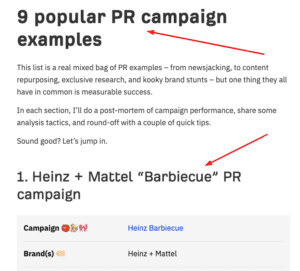
Best Practices for Subheadings
Subheadings provide structure and guide readers through the content. They also offer additional opportunities for keyword placement. However, avoid keyword-stuffing your subheadings just for the sake of SEO. Instead, make sure the subheadings are relevant to the content that follows, enhancing the user experience.
Subheadings can also help your content rank for featured snippets (more on that later). When users search for specific questions or how-tos, search engines often look at subheadings to determine if the content answers those queries. Use question-based subheadings or provide clear, concise headings that summarize the section.
Another effective strategy is to optimize subheadings for different user intents. For example, if your content caters to both beginner and advanced audiences, subheadings like “SEO Basics for Beginners” and “Advanced SEO Copywriting Techniques” can help guide readers to the most relevant sections. This keeps users engaged and reduces bounce rates, which is a positive signal for SEO.
4. Create High-Quality, Engaging Content
Google rewards websites that deliver quality content. High-quality content is original, informative, and relevant to your audience. It keeps users engaged, reduces bounce rates, and increases time on site—two important ranking factors. A well-structured blog post can significantly enhance user engagement and improve search rankings.
How to Create High-Quality Content
- Focus on readability: Break up large chunks of text with short paragraphs, bullet points, and images to make your content more digestible.
- Deliver value: Ensure that your content answers the user’s query and provides more value than your competitors’ content. Deep research, unique insights, and actionable takeaways help set your content apart.
- Maintain originality: Plagiarism or overly repetitive content won’t perform well in search engines. Use your own voice and perspective, backed by reliable sources and data.
- Include visual elements: Visuals such as images, infographics, and videos not only make your content more engaging but also improve on-page SEO (as they can rank in image search).
Writing for Skimmers
Most readers skim articles rather than read them word-for-word. Ensure your content is easy to scan by using subheadings, bolded text for key points, and bullet points or numbered lists.
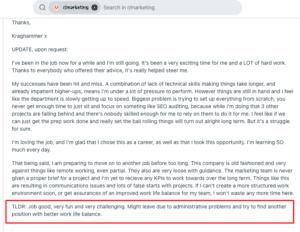
Additionally, long-form content has been proven to perform better in search rankings. Articles of 1,500 words or more are more likely to rank highly because they offer comprehensive insights and keep readers on the page longer. That said, length alone isn’t enough—quality is paramount. A 2,000-word article filled with fluff won’t perform as well as a shorter, highly focused, and informative post.
One tactic that works well for creating high-quality content is to conduct thorough competitor analysis. Look at the top-ranking pages for your target keywords and analyze what they are doing right. Are they providing more in-depth information? Do they have more engaging visuals? What gaps can you fill that their content doesn’t cover? Use these insights to enhance your own content and offer something unique and valuable.
5. Focus on On-Page SEO Elements
On-page SEO elements refer to aspects you can control within your content, such as meta tags, URL structure, and internal linking. These elements help search engines index and rank your content effectively.
Essential On-Page SEO Elements to Optimize
- Title tags: The title tag is what appears as the clickable headline in search results. It should include your primary keyword and entice users to click.
- Meta descriptions: While not a direct ranking factor, meta descriptions can influence click-through rates. Write a concise summary (under 160 characters) that includes the primary keyword and encourages readers to click.
- URL structure: Ensure your web page URLs are clean and contain your primary keyword. Avoid using random numbers or irrelevant characters.
- Alt text for images: Alt text describes images to search engines. Use descriptive, keyword-rich alt text for your images to help them rank in image search and improve accessibility for visually impaired users.

Best Practices for Internal Linking
- Link to related content: Internal linking helps search engines understand the hierarchy and relevance of your content. Link to other relevant pages or blog posts within your site to increase time spent on the website and distribute authority.
- Use descriptive anchor text: Instead of “click here,” use anchor text that describes what the user will find (e.g., “learn about SEO copywriting”).
Optimizing Your Content for Voice Search
Voice search is an increasingly important aspect of SEO. With the rise of virtual assistants like Alexa, Siri, and Google Assistant, optimizing your content for voice queries can give you a significant edge. To do this, you’ll need to focus on long-tail, conversational keywords and questions.
When people use voice search, they typically phrase their queries as full sentences or questions, rather than short keyword phrases. For example, instead of typing “best running shoes,” they might ask, “What are the best running shoes for marathon training?” By anticipating these types of queries and answering them directly in your content, you increase your chances of ranking for voice searches.
Another way to optimize for voice search is by including brief, conversational responses within your content. These can be framed in a question-and-answer format, increasing the likelihood that Google will use your content in a featured snippet or voice result.
6. Write for Featured Snippets
Featured snippets are the short, summarized answers that appear at the top of some search engine results pages (SERPs). Ranking in a featured snippet can dramatically increase your visibility and click-through rate.
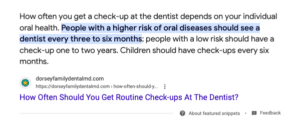
How to Optimize for Featured Snippets
- Answer questions clearly: Write concise, direct answers to commonly asked questions within the first few paragraphs of your content. Use question-based headings (H2 or H3) to signal to Google that your content answers a specific query.
- Use bullet points and lists: Google often pulls lists or steps into featured snippets. When writing how-tos or guides, format your content into easy-to-read bullet points or numbered lists.
- Provide definitions and summaries: When appropriate, define complex terms or concepts in a simple way to help your content appear in definition-based snippets.
Example:
If you’re writing about SEO copywriting, include a direct answer like:
“What is SEO Copywriting? SEO copywriting is the process of writing content optimized for search engines, focusing on keywords and user intent to improve ranking and drive organic traffic.”
Featured snippets have become an integral part of SEO strategy due to their prominent position at the top of SERPs. When your content is selected for a featured snippet, it often appears above the top-ranking organic results, earning it the coveted “position zero.”
To increase your chances of ranking in a featured snippet, it’s important to focus on answering common questions clearly and concisely. Using structured data (schema markup) can also help search engines better understand the content and increase the chances of it being pulled into a snippet.
7. Improve Page Load Speed
Page load speed is a significant ranking factor for Google. A slow website not only impacts user experience but can also lead to higher bounce rates and lower rankings.
Tips to Improve Page Load Speed
- Optimize images: Use image compression tools like TinyPNG or ImageOptim to reduce file size without compromising quality.
- Enable browser caching: Caching stores copies of your site’s files, reducing load time for returning visitors.
- Minimize redirects: Too many redirects can slow down your site. Streamline your internal linking and minimize unnecessary redirects.
- Use a content delivery network (CDN): CDNs store copies of your site on multiple servers worldwide, ensuring faster load times regardless of the user’s location.
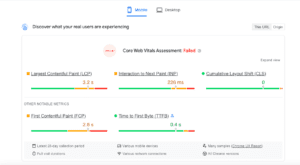
The Impact of Page Load Speed on SEO
Users expect websites to load quickly—ideally within 2 to 3 seconds. Slow load times can result in high bounce rates, and Google takes these metrics into account when determining rankings. The faster your page loads, the better the user experience and the more likely users will stay on your site, interact with your content, and convert. Additionally, Google’s Core Web Vitals, part of its Page Experience update, emphasize page load speed as a critical ranking factor.
Make sure to regularly test your website’s performance using tools like Google’s PageSpeed Insights, GTmetrix, or Pingdom. These tools will give you insights into which elements are slowing down your site and provide recommendations on how to optimize them.
8. Leverage External Linking and Backlinks
Backlinks (links from other websites to your content) are one of the most important ranking factors. Earning high-quality backlinks from reputable websites can significantly improve your search engine rankings.
How to Earn Quality Backlinks
- Create shareable content: Produce high-quality, authoritative content that others in your industry will want to reference. Data-driven studies, unique insights, and infographics tend to attract more backlinks.
- Guest blogging: Write guest posts for reputable websites in your industry, ensuring they link back to your content.
- Outreach: Reach out to websites or bloggers who may find your content valuable and suggest they link to it.

External Linking Best Practices
- Link to authoritative sources: External links to reputable websites increase the credibility of your content. Make sure the sites you link to are trustworthy and relevant to your topic.
- Avoid too many outbound links: While linking to valuable external content is good, avoid overloading your article with too many external links, as this can distract readers and dilute your authority.
Building a Backlink Strategy
Backlinks, also known as inbound links, are a major factor in determining the authority of your website. The more high-quality backlinks you have, the better your chances of ranking well. However, it’s important to focus on quality over quantity. Backlinks from authoritative, relevant websites will carry more weight than dozens of links from low-quality or unrelated sites.
One effective way to build backlinks is to create content that people want to link to. This can include comprehensive guides, industry reports, original research, or infographics. These types of content are often referenced by other bloggers, journalists, and industry leaders, which can lead to natural backlink generation.
Another approach is outreach. Once you’ve published a high-quality piece of content, reach out to websites or influencers in your industry and suggest they check it out. If they find it valuable, they may link to it in their own content.
Finally, consider broken link building. This involves finding broken links on relevant websites, reaching out to the site owner, and suggesting they replace the broken link with one to your content. It’s a win-win situation—they fix a broken link, and you gain a backlink.
9. Optimize Content for Mobile Users
With mobile traffic surpassing desktop, optimizing your content for mobile users is essential for SEO. Google uses mobile-first indexing, meaning it primarily uses the mobile version of content for ranking and indexing.
Tips for Mobile Optimization
- Responsive design: Ensure your website is mobile-friendly with a responsive design that adjusts to different screen sizes.
- Short paragraphs: Long blocks of text can be overwhelming on mobile screens. Stick to shorter paragraphs and simple sentence structures.
- Large, readable fonts: Use a font size that’s easy to read on smaller devices, and ensure links and buttons are large enough to be tapped without difficulty.
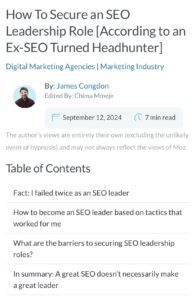
Mobile SEO Best Practices
The mobile experience is critical for SEO, especially considering that over 50% of web traffic comes from mobile devices. Beyond just ensuring your content looks good on mobile, focus on enhancing the user experience with fast-loading pages, simple navigation, and intuitive design. Tools like Google’s Mobile-Friendly Test can help you identify any issues with your website’s mobile experience.
Additionally, consider mobile-specific search behavior. Mobile users tend to perform quick, action-oriented searches. This means your content should be optimized for concise, easy-to-digest information. Use bold headings, short paragraphs, and bullet points to make your content mobile-friendly and scannable.
10. Regularly Update Your Content
SEO isn’t a one-and-done process. Google prefers fresh, updated content, and regularly revisiting your old posts can improve their rankings. Content that was once relevant may lose its value over time as industry trends change or new information becomes available.
How to Refresh Old Content
- Update outdated information: Ensure that any statistics, trends, or advice are current and accurate. Remove outdated references and replace them with up-to-date data.
- Improve readability: Add new subheadings, bullet points, or images to make the content easier to digest.
- Add new keywords: Conduct new keyword research and incorporate any emerging or trending terms relevant to your content.
Why Content Updates Matter for SEO
Google’s algorithm favors websites that consistently update their content, signaling to the search engine that the site remains relevant and useful to users. Updating content also helps maintain your authority in your industry. For example, if you’ve written a guide on a particular topic, you should regularly revisit it to ensure it reflects the latest best practices, trends, and data.
When updating old content, also consider user engagement metrics. Are users spending time on your page, or are they bouncing quickly? If you notice that certain pages have high bounce rates or low engagement, that could be a sign that the content is no longer meeting user expectations. Refreshing the content can breathe new life into those pages and improve your overall SEO performance.
Additionally, internal linking is an important factor to revisit when updating old content. Add new links to recent articles or related content, and make sure all links are still functioning properly.
Mastering SEO Copywriting
SEO copywriting is both an art and a science. It requires a deep understanding of how search engines work and the ability to create content that resonates with users. By mastering these SEO copywriting tips, you’ll be better equipped to create compelling content that not only ranks well but also engages and delights your readers.
Whether you’re a seasoned copywriter or just starting out, following these strategies will help ensure your content achieves long-term SEO success.
Final Thoughts: Staying Ahead of SEO Trends
As Google’s algorithm continues to evolve, staying informed about the latest SEO trends is crucial for continued success. Voice search, mobile-first indexing, and user experience signals are just a few areas that will shape the future of SEO. By continuously refining your SEO copywriting skills and staying up to date on industry changes, you can ensure your content remains relevant, valuable, and highly ranked.
Mastering SEO copywriting is a journey, not a destination. Keep refining your process, stay updated on best practices, and always prioritize the user experience. When you blend creativity, technical know-how, and a user-first mindset, you’ll produce content that not only ranks well but also drives meaningful results for your business.
Additional Resources for SEO Copywriters
If you’re looking to dive even deeper into SEO copywriting, consider exploring the following resources:
- Google’s Search Central Blog: Stay up to date on the latest SEO news and updates directly from Google.
- Ahrefs Blog: Offers comprehensive guides and tutorials on SEO strategies, including keyword research and backlink building.
- SEMrush Academy: Provides free courses on SEO, content marketing, and more to help you sharpen your skills.
Contact us today for an audit of your SEO content!
